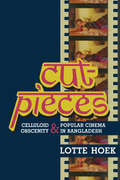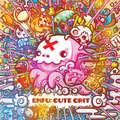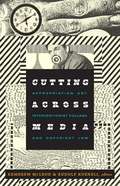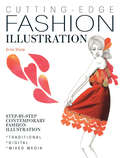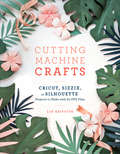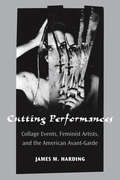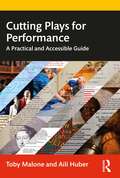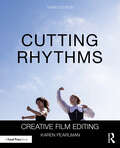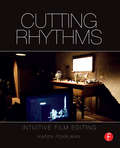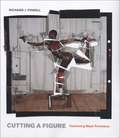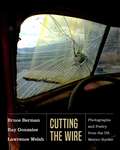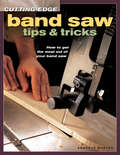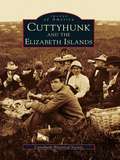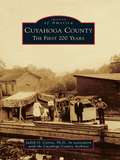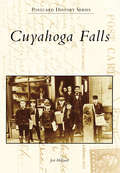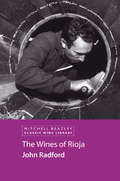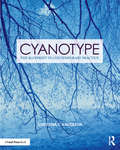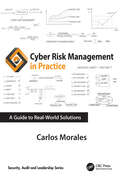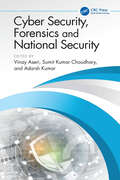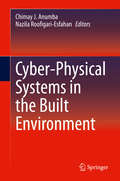- Table View
- List View
Cut-Pieces
by Lotte HoekImagine watching an action film in a small-town cinema hall in Bangladesh, and in between the gun battles and fistfights, a short pornographic clip appears. This is known as a cut-piece, a strip of locally made celluloid pornography surreptitiously spliced into the reels of action films in Bangladesh. Exploring the shadowy world of these clips and their place in South Asian film culture, Lotte Hoek builds a rare, detailed portrait of the production, consumption, and cinematic pleasures of stray celluloid.Hoek's innovative ethnography plots the making and reception of Mintu the Murderer (2005), a popular, Bangladeshi B-quality action movie and fascinating embodiment of the cut-piece phenomenon. She begins with the early scriptwriting phase and concludes with multiple screenings in remote Bangladeshi cinema halls, following the cut-pieces as they appear and disappear from the film, destabilizing its form, generating controversy, and titillating audiences. Hoek's work shines an unusual light on Bangladesh's state-owned film industry and popular practices of the obscene. She also reframes conceptual approaches to South Asian cinema and film culture, drawing on media anthropology to decode the cultural contradictions of Bangladesh since economic liberalization.
Cut-Pieces: Celluloid Obscenity and Popular Cinema in Bangladesh (South Asia Across the Disciplines)
by Lotte HoekImagine watching an action film in a small-town cinema hall in Bangladesh, and in between the gun battles and fistfights a short pornographic clip appears. This is known as a cut-piece, a strip of locally made celluloid pornography surreptitiously spliced into the reels of action films in Bangladesh. Exploring the shadowy world of these clips and their place in South Asian film culture, Lotte Hoek builds a rare, detailed portrait of the production, consumption, and cinematic pleasures of stray celluloid.Hoek's innovative ethnography plots the making and reception of Mintu the Murderer (2005, pseud.), a popular, Bangladeshi B-quality action movie and fascinating embodiment of the cut-piece phenomenon. She begins with the early scriptwriting phase and concludes with multiple screenings in remote Bangladeshi cinema halls, following the cut-pieces as they appear and disappear from the film, destabilizing its form, generating controversy, and titillating audiences. Hoek's work shines an unusual light on Bangladesh's state-owned film industry and popular practices of the obscene. She also reframes conceptual approaches to South Asian cinema and film culture, drawing on media anthropology to decode the cultural contradictions of Bangladesh since the 1990s.
Cute & Clever Totes
by Mary HertelCreate and customize fun, stylish bags with these projects using paper piecing, from the author of Sew Magical.With all they do for us, don’t purses deserve to have a little fun? Sew 6 easy bags for your everyday life, each featuring an adorable 8? paper-pieced block. Add an airplane pocket to your travel bag or a fancy fox to your drawstring tote—just sew by number and have fun watching the images appear! Use any block with any bag, and save some extra blocks for fun quilts, pillows, or potholders—you’ll make an endless array of personalized gifts for friends and family. Paper piece with less waste thanks to the author’s time-saving tips!• Pick your bag and pick your block for playful totes with paper-pieced blocks in 96 combinations• Bags so cute, you can’t make just one! Sew 6 versatile projects from a market tote to a messenger bag• Personalize your bags with 16 crazy-cute paper-pieced blocks—each with full-size templates
Cute Grit
by Enfu"A sumptuous, beautiful collection of cyborgs, sushi, and monsters-this book is a feast for the eyes and a phosphorescent display of creativity. Other than watching an octopus make love to a rainbow, I can't think of anything I'd rather stare at than this book." - Matthew Inman, creator of The OatmealIt's adorable, explosive and has more chibis than an Akibahara game store.Welcome to the whimsical world of Cute Grit, the digitally rendered pop art debut by video game developer and artist Enfu. Comprised of over 1,000 illustrations, this fantastical collection explores the intersections between video games, art and the Asian American experience through the lens of Enfu's wild, east-meets-west style. Re-discover your favorite game villains, cartoon characters, icons and cityscapes in a digital universe where Enfu unites the loveable, the warped, and the fantastic in a world both foreign and familiar, sweet and surly, gritty and cute.Ken "Enfu" Taya enjoys his day job in the video game industry as a developer for titles such as Halo 3 (XBO 360) and Scribblenauts Unmasked (WiiU, PC, 3DS). His commissioned illustrations and murals can be seen in stores and restaurants across the Pacific Northwest, and his popular bilingual comic, I Fart Rainbow, enjoys success in print and digital media outlets. Other Enfu collaborative projects include Enfu Snaps hats, Bombsheller leggings, and customized t-shirts. His first indie game, Matchfu, is set to release in late 2014. Ken Taya lives in Bellevue, Washington, with his wife and daughter.
Cute Kawaii Doodles
by Sarah AlbertoBursting with ideas for illustrators and those who have never sketched before, this inspirational book will teach you how to draw more than 100 adorable doodles and super-cute characters in just a few easy steps. Starting with a simple shape such as a circle or a square, Sarah Alberto - aka Doodles by Sarah - shows you how to transform these into a quirky plant, a cute donut, a characterful face, a dainty cloud, and much, much more.Annotated with quick tips and tricks to explain the process, the visual steps will show you how to create a whole host of charming characters, using the ubiquitous ballpoint pen. Why a ballpoint pen? It's universal, affordable, and versatile, and allows you to create small details and sharp lines. Sarah also demonstrates how you can also use coloured pencils or markers to add extra life to your completed doodles.With the author's engaging, sweet and simple style, you'll be instantly inspired to pick up a pen and some paper and doodle like you've never done before!
Cutting Across Media: Appropriation Art, Interventionist Collage, and Copyright Law
by Kembrew Mcleod Rudolf KuenzliIn this collection of essays, leading academics, critics, and artists historicize collage and appropriation tactics that cut across diverse media and genres. They take up issues of appropriation in the popular and the avant-garde, in altered billboards and the work of the renowned painter Chris Ofili, in hip-hop and the compositions of Bla Bartk and Zoltn Kodly, and in audio mash-ups, remixed news broadcasts, pranks, culture jamming, and numerous other cultural forms. The borrowing practices that they consider often run afoul of intellectual property regimes, and many of the contributors address the effects of copyright and trademark law on creativity. Among the contributors are the novelist and essayist Jonathan Lethem, the poet and cultural critic Joshua Clover, the filmmaker Craig Baldwin, the hip-hop historian Jeff Chang, the 'zine-maker and sound collage artist Lloyd Dunn, and Negativland, the infamous collective that was sued in 1991 for sampling U2 in a satirical sound collage. Cutting Across Media is both a serious examination of collage and appropriation practices and a celebration of their transformative political and cultural possibilities. Contributors Craig Baldwin David Banash Marcus Boon Jeff Chang Joshua Clover Lorraine Morales Cox Lloyd Dunn Philo T. Farnsworth Pierre Joris Douglas Kahn Rudolf Kuenzli Rob Latham Jonathan Lethem Carrie McLaren Kembrew McLeod Negativland Davis Schneiderman David Tetzlaff Gbor Vlyi Warner Special Products Eva Hemmungs Wirtn
Cutting Edge Fashion Illustration
by Erica SharpCutting-Edge Fashion Illustration is the go-to resource and inspiration if you're a budding fashion designer, fashion illustrator or just simply want to learn more illustration techniques.Covers all key areas of illustration using traditional, digital and mixed media methods, offering clear advice on how to manage color, textures, patterns and how to create your own fashion portfolio.Easy to follow step-by-step tutorials demonstrate each of the techniques, followed by a gallery of inspirational images show how to use each technique in your own illustrations.Erica is a fashion illustrator working with key fashion publications in London, UK, one of the world's leading cities of fashion, so her style is very commercial and current!
Cutting Machine Crafts with Your Cricut, Sizzix, or Silhouette: Die Cutting Machine Projects to Make with 60 SVG Files
by Lia GriffithGet more creative with your Cricut, Sizzix, or Silhouette die cutting machine! Here are 50 easy projects and 60 templates for making gorgeous home accessories, fun party decor, and memorable gifts. This book includes beautiful items you can make using just about any electronic die cutting machine, by downloading the SVG templates, running your materials through your machine, and following the instructions to assemble your cut materials. Discover graphic Scandinavian patterns to decorate aprons and tea towels, paper succulent centerpieces, and dozens of blooms for bouquets, garlands, and crowns. Every project includes easy instructions and plenty of variations so you can get the most out of your machine. With an introduction to electronic die cutting machines and options for cutting the templates out by hand, this book is full of inspiration and expert advice.Includes instructions for downloading 60 SVG cut files compatible with most electronic cutting machines.
Cutting Performances: Collage Events, Feminist Artists, and the American Avant-Garde
by James M. Harding"A thoughtful and engaging contribution to the field that will have a sustained and lasting impact on the way feminist performance is defined and understood, as well as on how feminist histories and historiographies continue to challenge and transform the larger field of performance. " ---Charlotte Canning, The University of Texas at Austin. "Harding forcefully challenges and destabilizes the male-centered Eurocentric genealogy of the avant-garde, which he claims is an uncontested, linear, positivistic history, unproblematized by theory. Then he argues that this gendered biased version of the European avant-garde is carried over into American historiography . . . A forceful case for a revisionist history. " ---Daniel Gerould, The City University of New York Graduate Center Cutting Performanceschallenges four decades' worth of scholarship on the American avant-garde by offering a provocative reconceptualization of the history of avant-garde performance along feminist lines. Focusing on five women artists (Elsa von Freytag-Loringhoven, Gertrude Stein, Yoko Ono, Carolee Schneemann, and Valerie Solanas) whose performance aesthetics made prominent use of collage techniques, James M. Harding sheds light on the cultural history of the avant-garde and the role that experimental women artists played in that history. He investigates the prominent position that collage technique occupied within the artists' performance aesthetic, and the decisively feminist inflection that their work gives to collage as a mode of avant-garde expression. The radical juxtapositions in their works produce the powerful effects of making the familiar strange and establishing contexts from which new understandings may emerge. Harding examines the performative dimensions of collage in experimental, feminist redefinitions of the literary, graphic, and theatrical arts, filling a void in a scholarly discourse that, while ostensibly about the vanguard, has lagged well behind other significant theoretical and historiographical currents. Cutting Performancesnot only challenges assumptions that have governed scholarship on the American avant-garde but also establishes a context to rethink the history of American avant-garde performance along feminist lines. It will appeal to audiences interested in theater history and performance studies as well as those interested in the cultural history of the avant-garde and the role that feminist experimental artists have played in it. James M. Harding is Professor of English at the University of Mary Washington. His other books includeNot the Other Avant-Garde: Transnational Foundations of Avant-Garde Performance(with John Rouse);Restaging the Sixties: Radical Theaters and Their Legacies(with Cindy Rosenthal); andContours of the Theatrical Avant-Garde: Performance and Textuality. Illustration: Carolee Schneemann inEye Body-36 Transformative Actions(1963) Action for camera (Photograph by Erró). Reproduced by permission of Carolee Schneemann.
Cutting Plays for Performance: A Practical and Accessible Guide
by Toby Malone Aili HuberCutting Plays for Performance offers a practical guide for cutting a wide variety of classical and modern plays. This essential text offers insight into the various reasons for cutting, methods to serve different purposes (time, audience, story), and suggests ways of communicating cuts to a production team. Dealing with every aspect of the editing process, it covers structural issues, such as plot beats, rhetorical concepts, and legal considerations, why and when to cut, how to cut with a particular goal in mind such as time constraints, audience and storytelling, and ways of communicating cuts to a production team. A set of practical worksheets to assist with the planning and execution of cuts, as well as step-by-step examples of the process from beginning to end in particular plays help to round out the full range of skills and techniques that are required when approaching this key theatre-making task. This is the first systematic guide for those who need to cut play texts. Directors, dramaturgs, and teachers at every level from students to seasoned professionals will find this an indispensable tool throughout their careers.
Cutting Rhythms: Creative Film Editing
by Karen PearlmanThere are many books on the technical aspects of film and video editing. Much rarer are books on how editors think and make creative decisions. Filled with timeless principles and thought-provoking examples from a variety of international films, the third edition of Karen Pearlman’s Cutting Rhythms offers an in-depth study of the film editor’s rhythmic creativity and expertise, the processes and tools editors use to shape rhythms, and how rhythm works to engage audiences in film. Cutting Rhythms is written for editors, filmmakers, and students who are learning their craft, and more experienced practitioners who enjoy engaging with ideas about creative process.This fully revised and updated edition contains: A comprehensive definition of what rhythm in film editing is made from, how it is shaped, and what it is for Updated discussions about editors' creative expertise and how to develop it Tips on how to create and sustain audience empathy and engagement Insights into style and creative collaboration Advice on making onscreen drafts before finalizing your story New, international examples of fiction, documentary, streaming series, music video & more
Cutting Rhythms: Intuitive Film Editing
by Karen PearlmanThere are many books on the technical aspects of film and video editing. Much rarer are books on how editors think and make creative decisions. Filled with timeless principles and thought-provoking examples from a variety of international films, the second edition of Karen Pearlman's Cutting Rhythms offers an in-depth study of the film editor's rhythmic creativity and intuition, the processes and tools editors use to shape rhythms, and how rhythm works to engage audiences in film. While respecting the importance of intuitive flow in the cutting room, this book offers processes for understanding what editing intuition is and how to develop it. This fully revised and updated edition contains: New chapters on collaboration and "editing thinking"; Advice on making onscreen drafts before finalizing your story Tips on how to create and sustain audience empathy and engagement; Explanations of how rhythm is perceived, learned, practiced and applied in editing; Updated discussions of intuition, structure and dynamics; An all-new companion website (www.focalpress.com/cw/pearlman) with video examples and links for expanding and illustrating the principles of key chapters in the book.
Cutting a Figure: Fashioning Black Portraiture
by Richard J. PowellExamining portraits of black people over the past two centuries, Cutting a Figure argues that these images should be viewed as a distinct category of portraiture that differs significantly from depictions of people with other racial and ethnic backgrounds. The difference, Richard Powell contends, lies in the social capital that stems directly from the black subject's power to subvert dominant racist representations by evincing such traits as self-composure, self-adornment, and self-imagining. Powell forcefully supports this argument with evidence drawn from a survey of nineteenth-century portraits, in-depth case studies of the postwar fashion model Donyale Luna and the contemporary portraitist Barkley L. Hendricks, and insightful analyses of images created since the late 1970s. Along the way, he discusses major artists-- such as Frédéric Bazille, John Singer Sargent, James Van Der Zee, and David Hammons--alongside such overlooked producers of black visual culture as the Tonka and Nike corporations. Combining previously unpublished images with scrupulous archival research,Cutting a Figure illuminates the ideological nature of the genre and the centrality of race and cultural identity in understanding modern and contemporary portraiture.
Cutting the Wire: Photographs and Poetry from the US-Mexico Border
by Ray Gonzalez Bruce Berman Welsh LawrenceCutting the Wire, a masterful collaboration between photographer Bruce Berman and poets Ray Gonzalez and Lawrence Welsh, offers us a way to look again, to really look, at the border between Mexico and the United States. Berman, who has photographed and lived in El Paso for decades, is a documentarian who uses his camera to record what&’s in front of him rather than for, as he puts it, &“mere self-expression.&” Berman&’s visual investigations of the everyday realities of the border—detention centers, smeltertown cemeteries, kids playing along a river levee, descanso crosses on telephone poles for the disappeared—are exactly the stuff the poetry of Gonzalez and Welsh is made of. The multilayered histories of the border landscape provide an inexhaustible supply of rich and fertile raw material for both Gonzalez and Welsh. But their poetic visions allow them to capture elements of a personal and collective past that historians have often failed to record.
Cutting-Edge Band Saw Tips & Tricks: How To Get The Most Out Of Your Band Saw (Cutting Edge Ser.)
by Kenneth Burton15 Must-Have Jigs and FixturesIt's time to unleash the full power of your band saw. With Cutting-Edge Band Saw Tips & Tricks, you'll learn how to build 15 jigs and fixtures that will turn your band saw into the most useful tool in the shop. These essential accessories are easy to create with the complete step-by-step photos and instructions inside this book.No matter what you want to build, the techniques found here will make the construction process easier and the finished product better. You'll also find full plans for three gorgeous projects - all designed to harness the muscle of your new jigs and fixtures. Don't miss this chance to use your band saw in ways you never thought you could!
Cuttyhunk and the Elizabeth Islands (Images of America)
by Cuttyhunk Historical SocietyFive of the Elizabeth Islands-Naushon, Pasque, Nashawena, Cuttyhunk, and Penikese-date from 1602, when the Englishman Bartholomew Gosnold explored the waters of Vineyard Sound and Buzzards Bay aboard his ship the Concord. Although the small encampment Gosnold built on Cuttyhunk for trading with the Wampanoags was used for only a few weeks, journals kept by two crew members have survived and give vivid accounts of that voyage. Naushon, Pasque, and Nashawena are currently privately owned. Penikese, once a leper colony, is now the site of a school for troubled boys. Cuttyhunk is now the only island with a village center and easy public access. Captivating photographs and postcards in Cuttyhunk and the Elizabeth Islands trace the special experience of island life from the unspoiled habitat of Gosnold's time to the first invasion of summer folk in the 1950s. These vintage images not only show how the islands' rock-strewn landscapes reflect the hard lives of the early islanders but also attest to the pleasures of picnics and boating as tourism and summer residents brought a modest degree of prosperity. Many previously unpublished photographs of large estates on Naushon portray a life of privilege. Views of Penikese depict the barren dormitories of the lepers who lived out their lives there.
Cuyahoga County: The First 200 Years (Images of America)
by Cuyahoga County Archives Judith G. CetinaCuyahoga County, located on the shores of Lake Erie and the banks of the Cuyahoga, has recently marked its bicentennial, celebrating two centuries of history and achievement. From the county's creation in 1808, to the World War II era and beyond, Cuyahoga County was transformed from a frontier community into a vibrant urban center. Today this part of northeastern Ohio is envied for its distinctive neighborhoods, embrace of various religious creeds, resilient entrepreneurship, ethnically and racially diverse population, political leadership, recreational facilities, splendid cultural and educational institutions, storied sports franchises, and distinguished health facilities. Cuyahoga County government and its citizens are also renowned for their philanthropy and concern for those most vulnerable; championing ideals that ensure everyone an equal place at the table and freedom everywhere. This worldview was rooted in the actions of those who, throughout the centuries, risked their lives and fortunes to attain these goals, giving greater meaning to the area's Underground Railroad code name: HOPE.
Cuyahoga Falls (Postcard History Series)
by Jeri HollandWelcome to Cuyahoga Falls, Ohio, a small American town that epitomizes America itself. With a history dating back to the rough decades when the land was a deep wilderness inhabited by natives and adventure-seeking Europeans, the town grew into an industrial juggernaut, weathered disasters, embraced inventiveness, and spearheaded progress. Between these covers readers will find a treasure trove of postcards from a colorful past. From grand old buildings and daily town life to the natural beauty and resources of the Cuyahoga River, the images in Postcard History Series: Cuyahoga Falls reflect memories of Americana and times long since past.
Cuéntele su Historia al Mundo y Véndala por Millones
by Kenneth Atchity Lisa CerasoliCuéntele su Historia al Mundo y Véndala por Millones, es un libro infaltable tanto para escritores como para guionistas. Posee todo aquello que no le dicen a uno mientras cursa una carrera relacionada con la creación literaria. Pero no solamente son los meros datos de usos y costumbres de los mercados editoriales, también de los nuevos mercados y las posibilidades de una edición electrónica sin pasar por las casas editoriales. ¡Ni hablar de hacer que su historia esté "en forma" para la soñada posibilidad de que su libro se convierta en una película! Este libro lo ayudará efictivamente a contar su historia al mundo, y lo ayudará a venderla por millones!!!
Cwl Wines Of Rioja Ebook
by John RadfordOver the last decade, Spain’s most classic and widely recognized wine region,Rioja, has experienced a tumultuous evolution in its wine industry. This bookdocuments the changes in wine law, the heated debates between the networkof estates, bodegas, and growers, and the problems of overproduction. All aspectsof the wines of Rioja are covered in detail – from the traditional estates to the mostinnovative bodegas to the newest styles of red and white wines available. Thereare comprehensive, indepth profiles of producers and their wines, with opinions and observations from the world’s most recognized expert on Spanish wine.
Cyanotype: The Blueprint in Contemporary Practice (Contemporary Practices in Alternative Process Photography)
by Christina Z AndersonCyanotype: The Blueprint in Contemporary Practice is a two part book on the much admired blue print process. Part One is a comprehensive how-to on the cyanotype process for both beginner and advanced practitioners, with lots of photographs and clear, step-by-step directions and formulas. Part Two highlights contemporary artists who are using cyanotype, making work that ranges from the photographic to the abstract, from the traditional to the conceptual, with tips on their personal cyanotype methods alongside their work. These artists illustrate cyanotype’s widespread use in contemporary photography today, probably the most of any alternative process. Book features include: A brief discussion of the practice of the process with some key historical points How to set up the cyanotype ÒdimroomÓ The most extensive discussion of suitable papers to date, with data from 100+ papers Step-by-step digital negative methods for monochrome and duotone negatives Chapters on classic, new, and other cyanotype formulas Toning to create colors from yellow to brown to violet Printing cyanotype over palladium, for those who want to temper cyanotype’s blue nature Printing cyanotype on alternate surfaces such as fabric, glass, and wood More creative practice ideas for cyanotype such as handcoloring and gold leafing Troubleshooting cyanotype, photographically illustrated Finishing, framing, and storing cyanotype Contemporary artists’ advice, techniques, and works Cyanotype is backed with research from 120 books, journals, and magazine articles from 1843 to the present day. It is richly illustrated with 400 photographs from close to 80 artists from 14 countries. It is a guide for the practitioner, from novice to expert, providing inspiration and proof of cyanotype’s original and increasing place in historical and contemporary photography.
Cyber Risk Management in Practice: A Guide to Real-World Solutions (Security, Audit and Leadership Series)
by Carlos MoralesCyber Risk Management in Practice: A Guide to Real-World Solutions is your companion in the ever-changing landscape of cybersecurity. Whether you're expanding your knowledge or looking to sharpen your existing skills, this book demystifies the complexities of cyber risk management, offering clear, actionable strategies to enhance your organization's security posture. With a focus on real-world solutions, this guide balances practical application with foundational knowledge.Key Features: Foundational Insights: Explore fundamental concepts, frameworks, and required skills that form the backbone of a strong and pragmatic cyber risk management program tailored to your organization’s unique needs. It covers everything from basic principles and threat modeling to developing a security-first culture that drives change within your organization. You’ll also learn how to align cybersecurity practices with business objectives to ensure a solid approach to risk management. Practical Application: Follow a hands-on step-by-step implementation guide through the complete cyber risk management cycle, from business context analysis to developing and implementing effective treatment strategies. This book includes templates, checklists, and practical advice to execute your cyber risk management implementation, making complex processes manageable and straightforward. Real-world scenarios illustrate common pitfalls and effective solutions. Advanced Strategies: Go beyond the basics to achieve cyber resilience. Explore topics like third-party risk management, integrating cybersecurity with business continuity, and managing the risks of emerging technologies like AI and quantum computing. Learn how to build a proactive defense strategy that evolves with emerging threats and keeps your organization secure. “Cyber Risk Management in Practice: A Guide to Real-World Solutions by Carlos Morales serves as a beacon for professionals involved not only in IT or cybersecurity but across executive and operational roles within organizations. This book is an invaluable resource that I highly recommend for its practical insights and clear guidance” – José Antonio Fernández Carbajal. Executive Chairman and CEO of FEMSA
Cyber Security, Forensics and National Security (Advances in Digital Technologies for Smart Applications)
by Adarsh Kumar Vinay Aseri Sumit Kumar ChoudharyThe book serves two very important purposes. One the concept and vulnerabilities due to cyber attacks in all walks of lives are explained along with how to detect and reduce the risk through digital forensics. Secondly, how such threats at a larger proportion puts entire national security on stake. Thus, there are lot of take-aways as the book discusses for the first-time various dimensions of national security, the risks involved due to cyber threats and ultimately the prevention & detection through cyber forensics and cyber security architectures. This book empowers readers with a deep comprehension of the various cyber threats targeting nations, businesses, and individuals, allowing them to recognize and respond to these threats effectively. It provides a comprehensive guide to digital investigation techniques, including evidence collection, analysis, and presentation in a legal context, addressing a vital need for cybersecurity professionals and law enforcement. The book navigates the complex legal and policy considerations surrounding cybercrime and national security, ensuring readers are well-versed in compliance and ethical aspects. The primary purpose of "Cyber Forensics and National Security" is to fill a critical gap in the realm of literature on cybersecurity, digital forensics, and their nexus with national security. The need for this resource arises from the escalating threats posed by cyberattacks, espionage, and digital crimes, which demand a comprehensive understanding of how to investigate, respond to, and prevent such incidents.1) The book consists of content dedicated to national security to maintain law enforcement and investigation agencies. 2) The book will act as a compendium for undertaking the initiatives for research in securing digital data with national security with the involvement of intelligence agencies.3) The book focuses on real-world cases and national security from government agencies, law enforcement, and digital security firms, offering readers valuable insights into practical applications and lessons learned in digital forensics. and innovative methodologies aimed at enhancing the availability of digital forensics and national security tools and techniques.4) The book explores cutting-edge technologies in the field of digital forensics and national security, leveraging computational intelligence for enhanced reliability engineering, sustainable practices, and more.Readers gain insights into the critical role of cyber forensics in national security, helping them appreciate the strategic importance of safeguarding digital assets and infrastructure. For academicians and professional, this book serves as a valuable educational resource, offering instructors a comprehensive text for courses in cybersecurity, digital forensics, and national security studies. "Cyber Forensics and National Security" is a timely and essential resource that equips readers with the knowledge and tools required to confront the evolving challenges of our interconnected, digital world, ultimately contributing to the defence of national interests in cyberspace. This book will also be useful for postgraduate and researchers in identifying recent issues and challenges with cybersecurity and forensics. The academic disciplines where this book will be useful include: computer science and engineering, information technology, electronics and communication, and physics. The titles of courses where this book will be useful (but not limited to) include: Cybersecurity, Forensics, Digital Forensics, Cryptography, Network Security, Secure Computing Technologies , Transferable Machine and Deep learning and many more.
Cyber Warfare, Security and Space Research: First International Conference, SpacSec 2021, Jaipur, India, December 9–10, 2021, Revised Selected Papers (Communications in Computer and Information Science #1599)
by Sandeep Joshi Amit Kumar Bairwa Amita Nandal Milena Radenkovic Cem AvsarThis book sonstitutes selected papers from the first International Conference on Cyber Warfare, Security and Space Research, SpacSec 2021, held in Jaipur, India, in December 2021.The 19 full and 6 short papers were thoroughly reviewed and selected from the 98 submissions. The papers present research on cyber warfare, cyber security, and space research area, including the understanding of threats and risks to systems, the development of a strong innovative culture, and incident detection and post-incident investigation.
Cyber-Physical Systems in the Built Environment
by Chimay J. Anumba Nazila Roofigari-EsfahanThis book introduces researchers and practitioners to Cyber-Physical Systems (CPS) and its applications in the built environment. It begins with a fundamental introduction to CPS technology and associated concepts.It then presents numerous examples of applications from managing construction projects to smart transportation systems and smart cities. It concludes with a discussion of future directions for CPS deployment in the construction, operation and maintenance of constructed facilities. Featuring internationally recognized experts as contributors, Cyber-Physical Systems in the Built Environment, is an ideal resource for engineers, construction managers, architects, facilities managers, and planners working on a range of building and civil infrastructure projects.
